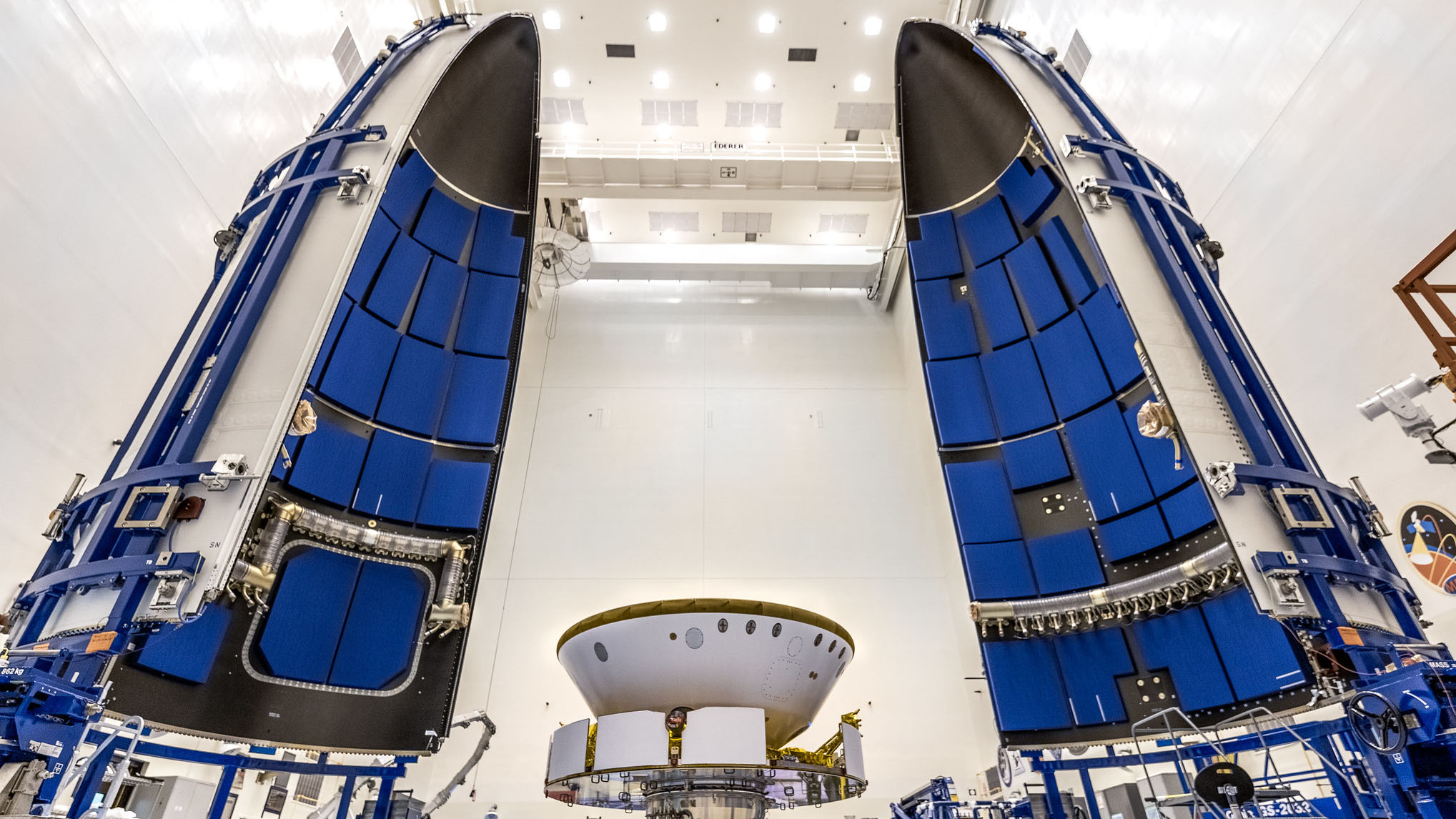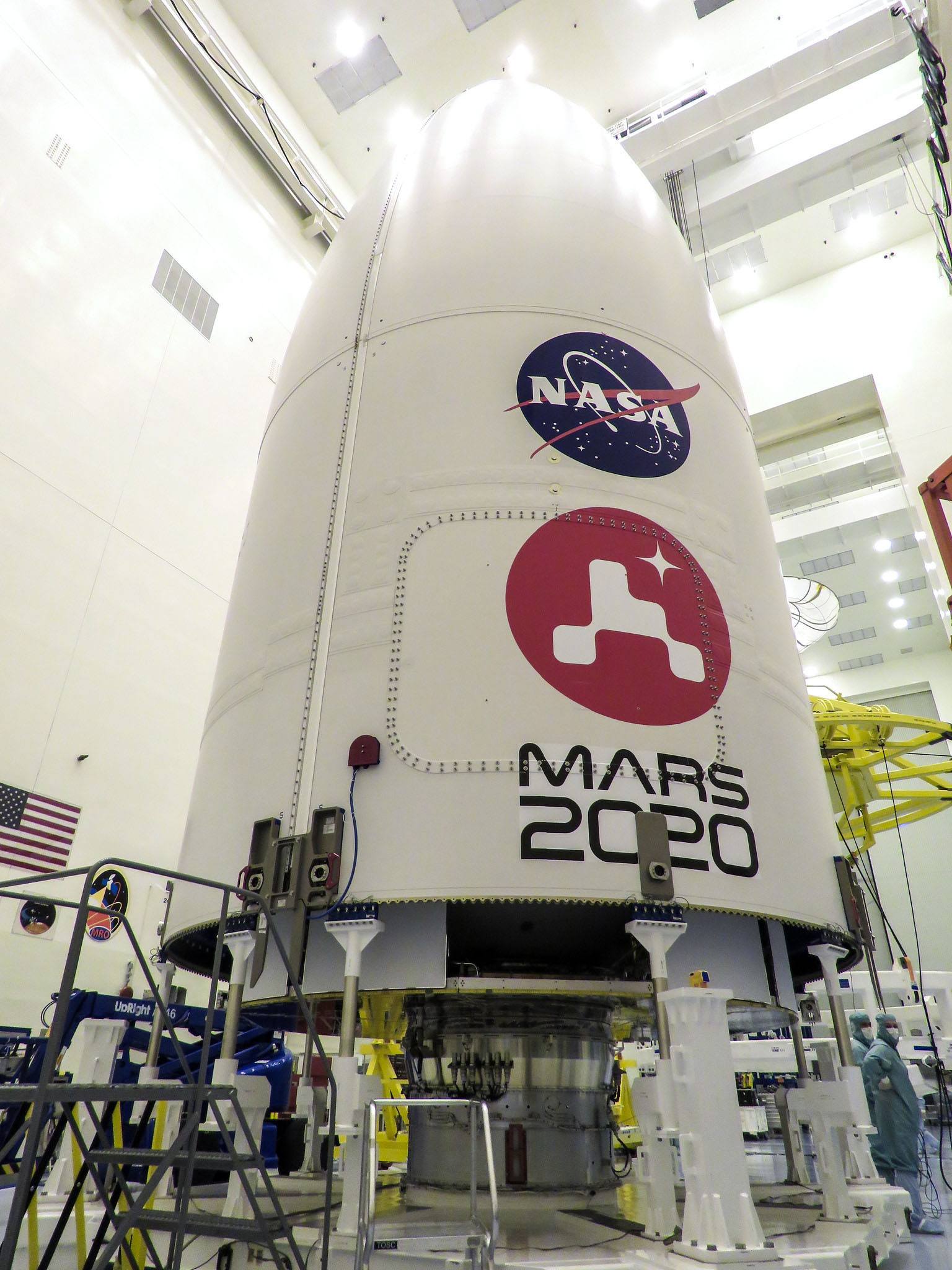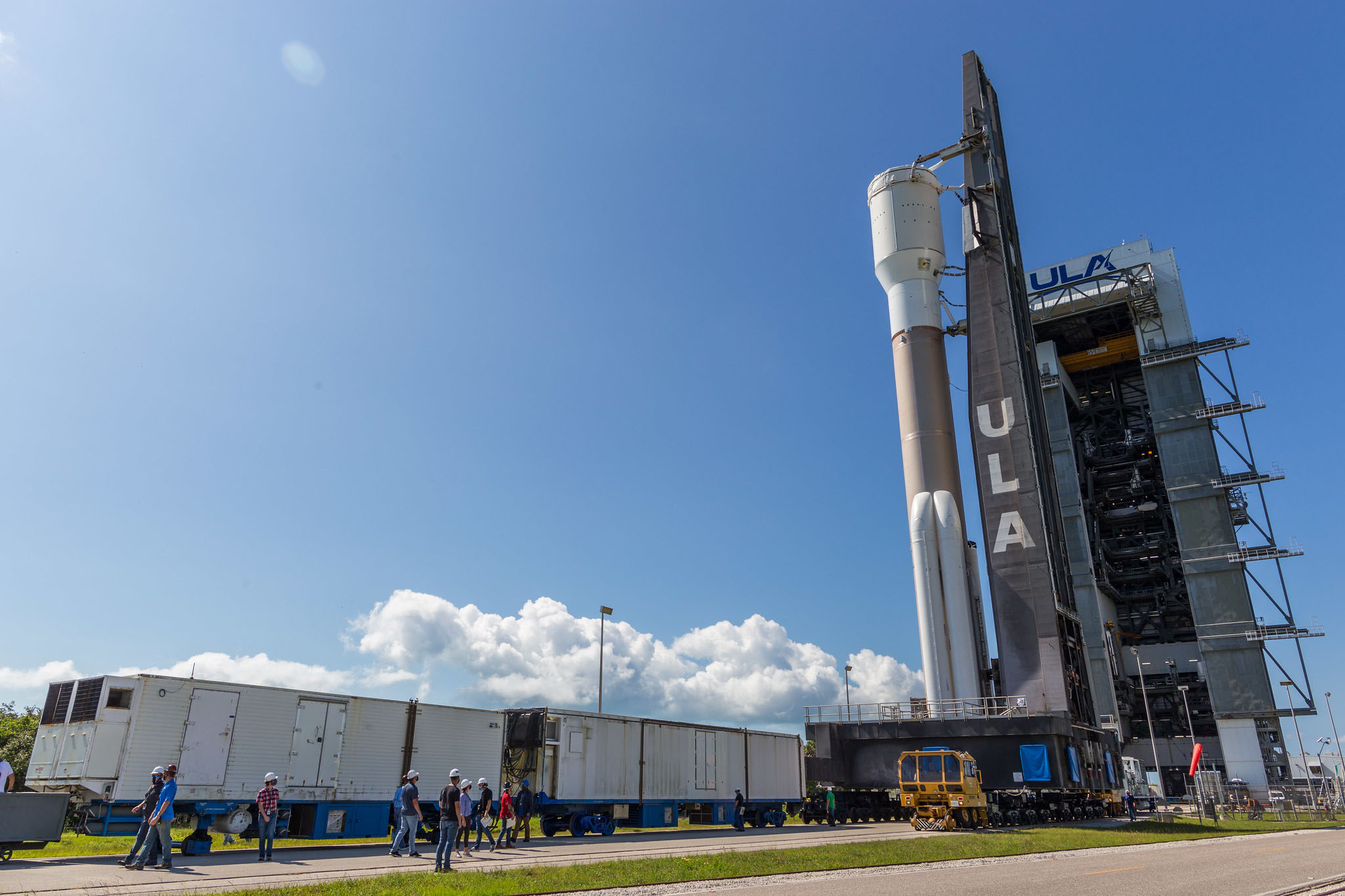Launch of NASA's next Mars rover delayed again by 'contamination concern' on the ground
The launch is delayed 2 more days to July 22.

The launch of NASA's next Mars rover has been delayed to no earlier than July 22 due to a contamination issue with ground support equipment, the space agency said today (June 24).
NASA's Mars rover Perseverance was scheduled to launch toward the Red Planet on July 20 from a pad at the Cape Canaveral Air Force Station in Florida. But a problem cropped up as engineers worked to encapsulate the rover in the nosecone of its Atlas V rocket, which was built by United Launch Alliance.
"NASA and United Launch Alliance are now targeting Wednesday, July 22, for launch of the Mars 2020 mission due to a processing delay encountered during encapsulation activities of the spacecraft," NASA officials said in an update. "Additional time was needed to resolve a contamination concern in the ground support lines in NASA's Payload Hazardous Servicing Facility (PHSF)."
Related: NASA's Mars 2020 rover Perseverance in pictures
The contamination issue marks the second delay in as many weeks for the Mars rover Perseverance. The mission was originally scheduled to launch July 17, but slipped three days to July 20 due to a ground system equipment issue that involved a faulty crane.
The Perseverance rover and its Atlas V rocket are in good health, according to NASA, and ULA successfully performed a "wet-dress rehearsal" (a test that included fueling the Atlas V rocket) on Monday (June 22). But the new delay cuts deeper into a limited window in which to launch the mission.
NASA has until Aug. 11 to launch the Perseverance rover to Mars and still reach the Red Planet in February 2021. If NASA doesn't make that launch window, the agency will have to wait another 26 months (until 2022), when the orbits of Mars and Earth will once again be aligned for such a mission.
Breaking space news, the latest updates on rocket launches, skywatching events and more!
On June 17, after the initial delay, NASA officials said Perseverance has plenty of time in its current launch window.
"We've got plenty of window or runway ahead of us and we're not worried about it," NASA launch director Omar Baez said in a news conference. "We'll probably run into some not-so-perfect days that could set us back and the team is flexible enough to be able to handle a three-week window."
It may even be possible to extend Perseverance's launch window to Aug. 15, Baez added.
The Mars rover Perseverance is expected to land inside Mars' 28-mile-wide (45 kilometers) Jezero Crater on Feb. 18, 2021. It is designed to search for evidence of ancient life, collect samples of Mars that will be returned to Earth on a later mission, and test technology to make oxygen from the carbon dioxide-rich Martian atmosphere.
The nuclear-powered robot is a successor to the Curiosity rover, which has been exploring the Gale Crater on Mars since August 2012. But unlike Curiosity, Perseverance will not be alone when it lands on Mars. It is carrying Ingenuity, the first helicopter built to fly on another planet.
The small drone is aiming to make three test flights in the Martian atmosphere during Perseverance's mission.
- Mars 2020: The Red Planet's next rover
- Meet 'Perseverance': NASA's Mars 2020 rover has a new name
- Photos: Ancient Mars lake could have supported life
Email Tariq Malik at tmalik@space.com or follow him @tariqjmalik. Follow us @Spacedotcom, Facebook and Instagram.
OFFER: Save 45% on 'All About Space' 'How it Works' and 'All About History'!
For a limited time, you can take out a digital subscription to any of our best-selling science magazines for just $2.38 per month, or 45% off the standard price for the first three months.

Tariq is the award-winning Editor-in-Chief of Space.com and joined the team in 2001. He covers human spaceflight, as well as skywatching and entertainment. He became Space.com's Editor-in-Chief in 2019. Before joining Space.com, Tariq was a staff reporter for The Los Angeles Times covering education and city beats in La Habra, Fullerton and Huntington Beach. He's a recipient of the 2022 Harry Kolcum Award for excellence in space reporting and the 2025 Space Pioneer Award from the National Space Society. He is an Eagle Scout and Space Camp alum with journalism degrees from the USC and NYU. You can find Tariq at Space.com and as the co-host to the This Week In Space podcast on the TWiT network. To see his latest project, you can follow Tariq on Twitter @tariqjmalik.



